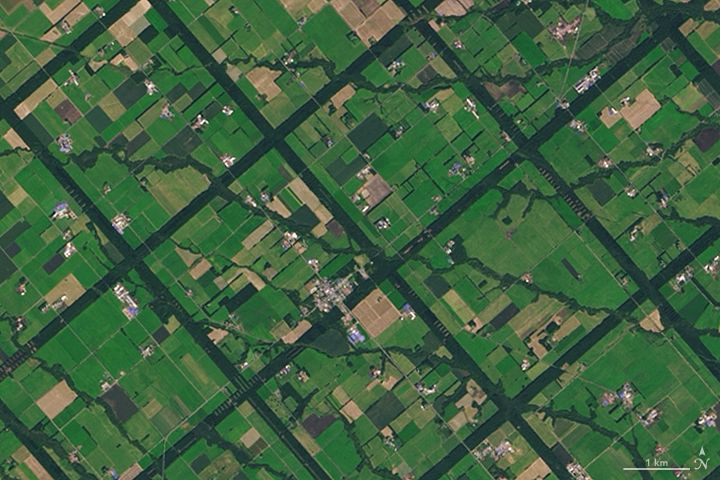NASA Satellite Image Shows Forested Grid Pattern In Japan’s Hokkaido

KEY POINTS
- NASA shared satellite images of a grid pattern in a landscape in Hokkaido
- The pattern made the landscape look rather like a checkerboard
- The lines are actually wide rows of forested windbreaks
- Windbreaks primarily protect greenery and animals by slowing the wind down
Satellite images of a landscape in eastern Hokkaido, Japan, show an interesting grid pattern that looks rather like a checkerboard. The pattern was deliberately made to protect grasslands and animals from harsh weather.
NASA Earth Observatory shared interesting natural-color images of the Konsen Plateau in eastern Hokkaido taken by the Operational Land Imager on the Landsat 8 satellite. In the first image taken Sept. 27, 2019, a massive grid pattern can be seen in dark green across the rural landscape.
In another image, taken more recently Feb. 27, 2020, the grid pattern can still be seen even under a thick layer of white snow.

According to NASA Earth Observatory, the strips are actually 180-meter wide rows of forrested windbreaks the Japanese government created in an effort to colonize the area.
"Planners used a grid pattern inspired by land development and farming practices popular at the time in pioneer areas of the midwestern and central United States," the agency explained, noting the Japanese government began creating the windbreaks in the 1890's.
The windbreaks protect the grasslands and the animals from harsh weather, for instance around January when winter kicks into high gear and the area experiences significant snowfall and intermittent blizzards. In the warmer months, the windbreaks help prevent soil and manure from scattering.
The primary purpose of windbreaks is to slow down the wind, which is beneficial for crops, livestock and even people. They are typically created by planting trees and shrubs in the area, but, in the case of Hokkaido, instead of planting forest strips, the government opted to just clear out squares from already existing forests.
Often, however, these windbreaks provide other purposes apart from slowing the wind down. For instance, they can also be used to reduce the noise, odor and visual impact from livestock operations. In some places, they can also provide an additional source of income if the trees in the windbreak can produce fruits, nuts or even materials for crafts.
Sometimes called "shelterbelts," windbreaks can also serve as habitat for wildlife, vegetative field borders and as support for native pollinators.
As simple as they may seem, windbreaks can actually provide community, economic and environmental benefits.
© Copyright IBTimes 2025. All rights reserved.






















